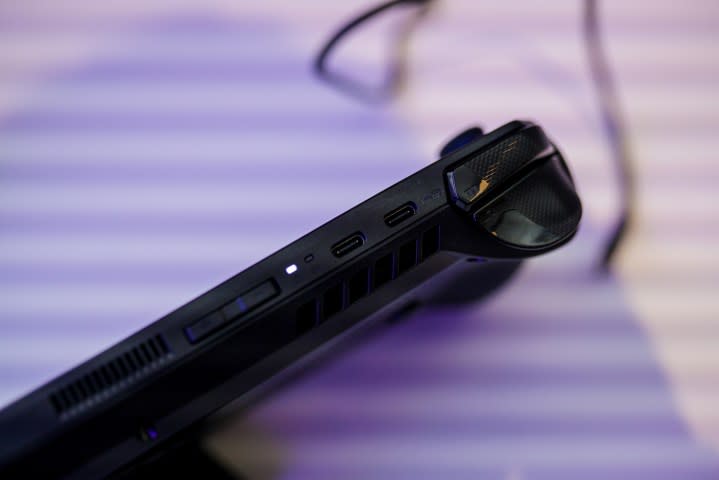Asus is axing one major feature with the ROG Ally X

Asus is giving up on one of the most unique aspects of the ROG Ally with its new model. The ROG Ally X is official, and as a string of teases and leaks suggested, it overhauls Asus’ handheld gaming PC in every way. In the process of upgrading the device, though, Asus gave up on its XG Mobile ecosystem that made the original device stand out so much.
The original ROG Ally includes a large, proprietary connector for one of Asus’ external XG Mobile GPUs. This allowed you to connect the handheld to a more powerful graphics card, as well as a slew of I/O (input/output), with a single cable. As we discovered while testing the XG Mobile, it doesn’t work quite the way you’d expect. Driver conflicts don’t give you the seamless experience Asus promised, and Asus is finally recognizing that fact.

The ROG Ally X instead includes dual USB-C ports. One is used for the charging, but the other supports USB 4, allowing you to connect any external GPU enclosure you could want. It gives you a lot more options for powering up the ROG Ally X, and it fixes a key issue we’ve seen on handhelds from the Steam Deck OLED to the MSI Claw. With a second USB-C port, you can charge the device while still connected to another accessory.
Elsewhere, the ROG Ally X is a significant upgrade over the original. You still get the AMD Ryzen Z1 Extreme chip under the hood, along with a 7-inch 1080p display that’s capable of a 120Hz refresh rate. Everything else has been upgraded, however. You get 24GB of memory now, and it’s faster at 7500 MT/s. You also get an 80 watt-hour battery, doubling the size of the battery available in the original model.
One of the more signficant upgrades is the storage. You get 1TB of space now, but Asus is using an M.2 2280 SSD. This is the same size that you’ll find in most desktops, which should make upgrades both easier and cheaper. Asus says it redesigned the storage to support drives with modules on both sides, allowing you to pack in up to 8TB of storage with an upgrade.

The other changes are more minor, but they could have a big impact. The macro keys on the back of the device are smaller now, and Asus swapped out the joysticks with the same ones you’ll find on the Steam Deck OLED. Asus is also working with GuliKit to provide Hall Effect joysticks as an upgrade in the future. Asus tells me the shell is slightly more rounded now as well, and it’s using a slightly larger sound chamber with the same speakers.
Similar to the Steam Deck OLED, the ROG Ally X is an opportunity to address the pain points of the original device while Asus works on a true sequel. It doesn’t come cheap, however. The ROG Ally X will run you $800, which is $100 more than the original model. Preorders are open for the device now, but Asus hasn’t confirmed the release date yet.
If you’re curious about if you should preorder the device, make sure to read our hands-on impressions of the ROG Ally X.


